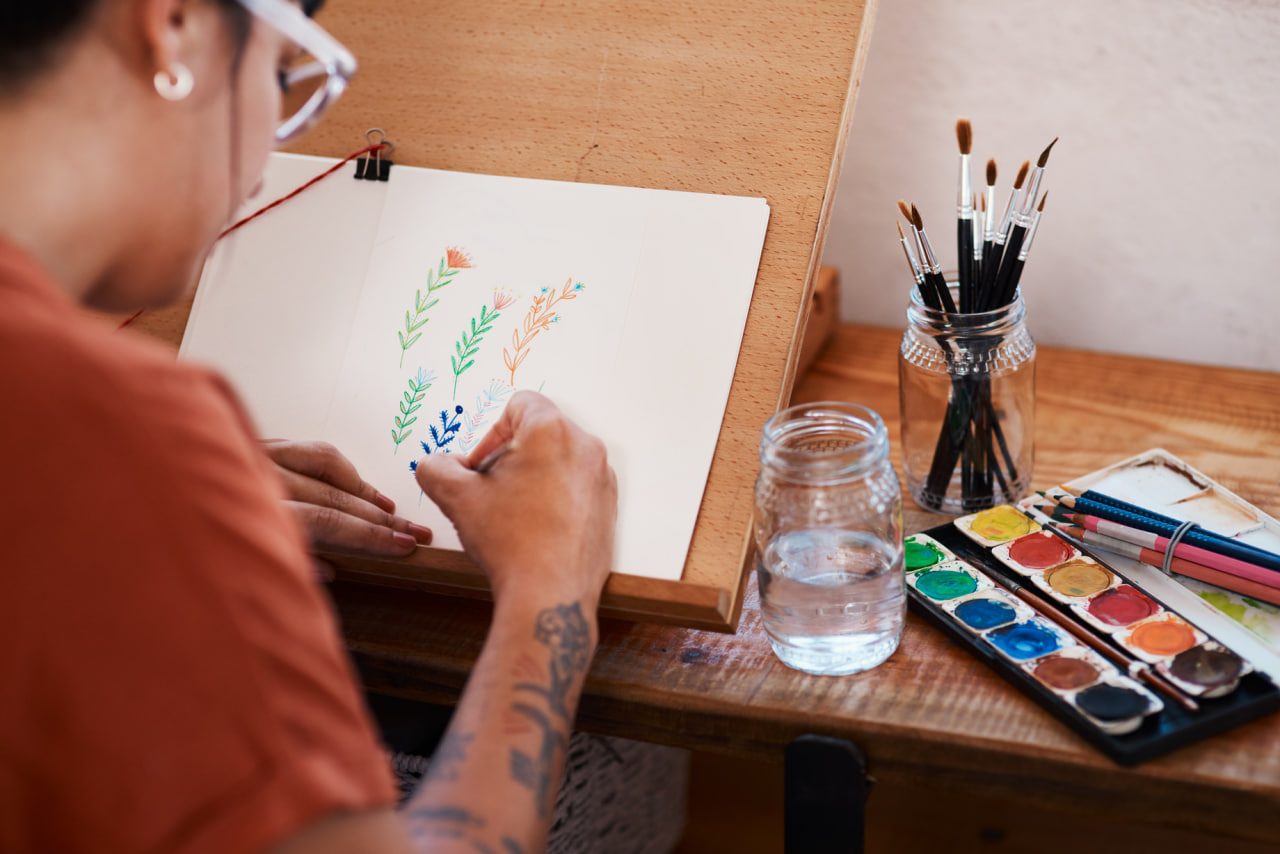Inspiration from Nature: How to Capture Landscapes with Watercolors
Nature has always been a profound source of inspiration for artists. The ever-changing skies, the gentle flow of rivers, the texture of trees, and the vibrant colors of flowers offer endless possibilities for creativity. Watercolor painting, with its fluidity and transparency, is an ideal medium for capturing the beauty and essence of landscapes. In this blog, we will explore how to draw inspiration from nature and translate it into compelling watercolor landscapes, along with practical tips to help you develop your skills.
Observing and Connecting with Nature
The first step to capturing landscapes is to truly observe and connect with the natural world around you. Take time to explore parks, forests, beaches, or even your backyard. Notice how light interacts with objects, how colors shift throughout the day, and the textures present in different elements such as leaves, rocks, and water.
Sketching outdoors, or “plein air” painting, can deepen your connection to the landscape and help you capture the atmosphere and mood of a scene. Even quick thumbnail sketches or color notes can serve as valuable references when working later in your studio.
Simplifying the Scene
Nature is complex and full of detail, which can be overwhelming to depict. One of the key skills in landscape painting is learning how to simplify the scene without losing its essence.
Focus on the main shapes, colors, and values rather than every leaf or blade of grass. Use broad washes and loose brushstrokes to suggest details and atmosphere instead of painting everything realistically. This approach allows the viewer’s imagination to fill in the gaps and creates a more expressive painting.
Choosing the Right Palette
Selecting colors that reflect the mood and lighting of your landscape is crucial. Nature offers a rich but harmonious color palette. Observe the dominant colors in your scene and consider how they interact.
Warm colors like yellows, oranges, and reds convey sunlight, warmth, and energy. Cool colors such as blues, greens, and purples suggest shade, calm, and distance. Using complementary colors can create vibrant contrasts and visual interest.
Mixing your own colors rather than relying solely on pre-mixed paints gives you greater control and allows you to match the subtle nuances found in nature.
Mastering Watercolor Techniques for Landscapes
Certain watercolor techniques work particularly well for landscapes. Wet-on-wet techniques create soft, atmospheric backgrounds perfect for skies and distant hills. Wet-on-dry techniques allow for sharper edges and details, useful for trees, rocks, and architectural elements.
Dry brushing can add texture to foliage or rough surfaces. Layering transparent washes builds depth and richness in colors. Experimenting with salt sprinkled on wet paint can create interesting textures resembling foliage or stone.
Capturing Light and Shadow
Light is one of the most important elements in landscape painting. Observing how light falls on objects and creates shadows adds dimension and realism to your work.
Use varying intensities of color to depict light and shadow. Lighter washes and cooler hues often represent light areas, while darker, warmer colors can indicate shadows. Remember to preserve some white or unpainted areas on your paper to represent highlights and reflections.
Composing Your Landscape
A strong composition guides the viewer’s eye through the painting and creates balance and interest. Use compositional techniques such as the rule of thirds, leading lines, and focal points to structure your landscape.
Include elements like trees, pathways, or water that lead the eye into the painting. Vary the sizes and shapes of objects to create depth and contrast. Negative space, or empty areas, can also be powerful in emphasizing the main subject.
Practicing Patience and Flexibility
Watercolor is a medium that requires patience and flexibility, especially when painting landscapes. Layers take time to dry, and watercolors can behave unpredictably.
Allow each layer to dry before adding new details to avoid unwanted blending. At the same time, be open to happy accidents and unexpected effects that enhance your painting. The fluid nature of watercolor can bring life and spontaneity to your landscapes.
Drawing Inspiration Beyond Direct Observation
While painting directly from nature is valuable, don’t hesitate to use photographs, memory, and imagination as inspiration. Combining different elements or altering colors can create unique and personal interpretations of landscapes.
Developing your artistic voice means blending observation with creativity and experimentation.

